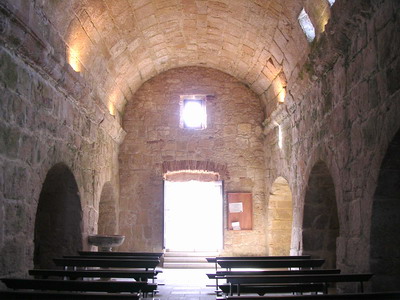

A Week in Sardinia (6/7)
These pictures were taken while touring the north half of the island of Sardinia in November 2005.

Inside the church of San Giovanni di Sinis, it was striking how thick and, in parts, mossy the walls were.
Just to to the left of the main entrance, there's a font. Move your mouse over the image to see it in close-up. Like the church as a whole, the font is very old and both ornate and simple.